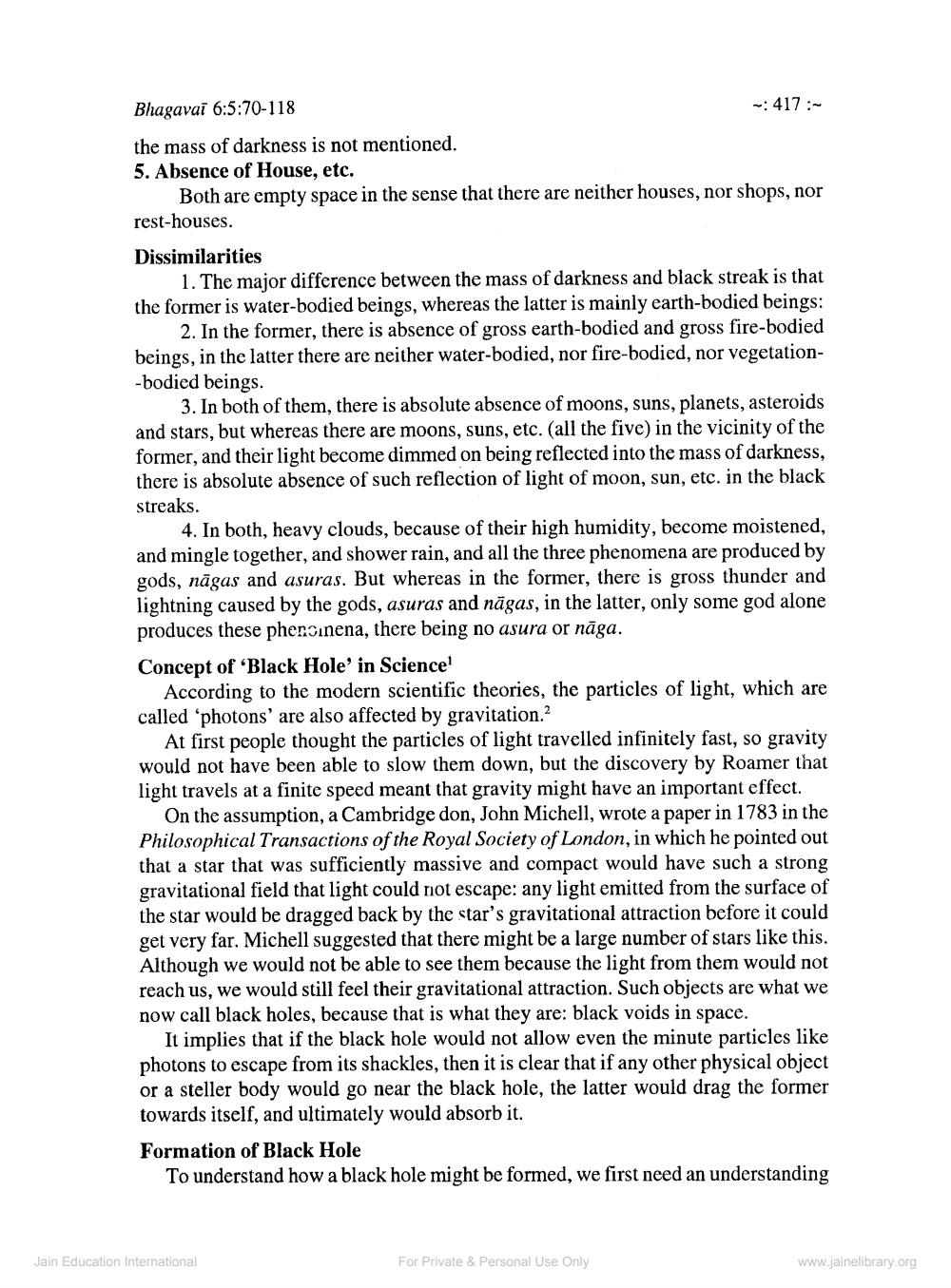________________
Bhagavai 6:5:70-118
the mass of darkness is not mentioned.
5. Absence of House, etc.
Both are empty space in the sense that there are neither houses, nor shops, nor rest-houses.
~: 417
Dissimilarities
1. The major difference between the mass of darkness and black streak is that the former is water-bodied beings, whereas the latter is mainly earth-bodied beings: 2. In the former, there is absence of gross earth-bodied and gross fire-bodied. beings, in the latter there are neither water-bodied, nor fire-bodied, nor vegetation-bodied beings.
3. In both of them, there is absolute absence of moons, suns, planets, asteroids and stars, but whereas there are moons, suns, etc. (all the five) in the vicinity of the former, and their light become dimmed on being reflected into the mass of darkness, there is absolute absence of such reflection of light of moon, sun, etc. in the black streaks.
4. In both, heavy clouds, because of their high humidity, become moistened, and mingle together, and shower rain, and all the three phenomena are produced by gods, nagas and asuras. But whereas in the former, there is gross thunder and lightning caused by the gods, asuras and nägas, in the latter, only some god alone produces these phenomena, there being no asura or naga.
Concept of 'Black Hole' in Science
According to the modern scientific theories, the particles of light, which are called 'photons' are also affected by gravitation.?
At first people thought the particles of light travelled infinitely fast, so gravity would not have been able to slow them down, but the discovery by Roamer that light travels at a finite speed meant that gravity might have an important effect.
On the assumption, a Cambridge don, John Michell, wrote a paper in 1783 in the Philosophical Transactions of the Royal Society of London, in which he pointed out that a star that was sufficiently massive and compact would have such a strong gravitational field that light could not escape: any light emitted from the surface of the star would be dragged back by the star's gravitational attraction before it could get very far. Michell suggested that there might be a large number of stars like this. Although we would not be able to see them because the light from them would not reach us, we would still feel their gravitational attraction. Such objects are what we now call black holes, because that is what they are: black voids in space.
It implies that if the black hole would not allow even the minute particles like photons to escape from its shackles, then it is clear that if any other physical object or a steller body would go near the black hole, the latter would drag the former towards itself, and ultimately would absorb it.
Formation of Black Hole
To understand how a black hole might be formed, we first need an understanding
Jain Education International
For Private & Personal Use Only
www.jainelibrary.org




